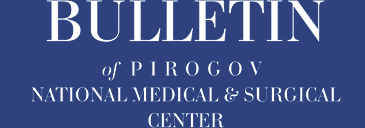Authors
Pokhabov D.S., Shestakov E.A., Melnichenko V.Ya., Fedyk O.V., Zhiburt E.B.
Pirogov National Medical and Surgical Center, Moscow
Abstract
Rationale: the use of intravenous immunoglobulin (IVIG) in various diseases accompanied by immune deficiency, as well as autoimmune disorders, is an important component of the complex treatment of patients, allowing to achieve improvement of clinical symptoms, and in some cases to achieve recovery.
Objective: to identify patterns of IVIG infusions in a multidisciplinary hospital, to assess the compliance of IVIG use with the standards of medical care.
Methods: retrospectively, based on the materials of 44,221 electronic medical records, we studied the administration of IVIG to patients of the Pirogov Center hospital in 2024. Infusions of 2.5%, 5% and 10% IVIG solution (CSL, Switzerland) were performed. The content of immunoglobulin in 1 bottle is 2.5 and 5 or 10 grams. The diagnosis, gender, age, actual and ideal body weight, length of hospitalization, patient treatment outcome, amount and mode of immunoglobulin administration, serum immunoglobulin G, M, and A concentrations at the first administration were assessed. The data were studied using descriptive and inductive statistics at a significance level of 0.05.
Results: IVIG was administered to 52 patients (0.1%): 29 women and 23 men aged 51.8±14.2. There were no fatal outcomes. The hospital stay was 20.8±18.1 days. These patients received 90 immunoglobulin infusions during 64 hospitalizations. 44 infusions were administered to women, who were, on average, 10.9 years younger and 15.8 kg lighter than male recipients. There were no gender differences in the length of hospitalization, serum immunoglobulin concentrations, or infusion parameters. The patient’s body weight directly correlates with the amount of IVIG administered. The IVIG dose per 1 kg of body weight inversely correlates with the actual body weight, but is not associated with the ideal body weight. The ideal body weight inversely correlates with the IgM concentration and with the IVIG dose per 1 kg of ideal body weight. In addition to the above-mentioned relationship between IgM and ideal body weight, the concentrations of immunoglobulin classes do not correlate with any other studied parameters or with each other. Using the laboratory information system, 10 inpatients with minimal IgG concentrations (from 1.25 to 2.57 g / l) were identified in 2024. Seven of them received IVIG, and three others did not receive it due to the lack of clinical indications or transfer to outpatient treatment.
Conclusion: ln 2024, 0.1% of inpatients of the Pirogov Center received IVIG. In total, patients received 1935 grams of IVIG, or, on average, about 32 grams of immunoglobulin per patient. The evidence-based regimen of hemotransfusion therapy (including plasma and cryoprecipitate transfusion) allows more than 90% of donor plasma to be used for drug production. Replacing the actual weight of an adult patient with the ideal weight in the instructions for use of IVIG will reduce the administered dose by 10%.
Keywords: immunoglobulin, infusion, dosage, concentration, standard, evidence-based medicine.
References
1. Romanenko NA, Bessmeltsev SS, Chechetkin AV. Correction of the immune status of patients with human immunoglobulin for intravenous administration. Kazanskii Medicinskii Zhurnal. 2017; 98(5): 775-783. (In Russ.) doi: 10.17750/KMJ2017-775.
2. von Bonsdorff L, Farrugia A, Candura F, et al. Securing commitment and control for the supply of plasma derivatives for public health systems. I: A short review of the global landscape. Vox Sang. 2024 Oct 30. doi: 10.1111/vox.13758.
3. Strengers PFW. Challenges for Plasma-Derived Medicinal Products. Transfus Med Hemother. 2023; 50(2): 116-122. doi: 10.1159/000528959.
4. Zhiburt EB, Khamitov RG, Pokhabov DS, et al. New in transfusiology (at the congress of the International Society of Blood Transfusion in Barcelona). Gematologiya. Transfusiologiya. Vostochnaya Evropa. 2024; 10(4): 581-596. (In Russ.) doi: 10.34883/PI.2024.10.4.008.
5. Stump SE, Schepers AJ, Jones AR, et al. Comparison of Weight-Based Dosing Strategies for Intravenous Immunoglobulin in Patients with Hematologic Malignancies. Pharmacotherapy. 2017; 37(12): 1530-1536. doi: 10.1002/phar.2047.
6. Pai MP, Paloucek FP. The origin of the “ideal” body weight equations. Ann Pharmacother. 2000; 34(9): 1066-9. doi: 10.1345/aph.19381.
7. Champagne JN, Desilets A, Roy G, et al. The impact of institutional measures on optimal use of intravenous immunoglobulin. Transfusion. 2024; 64(12): 2286-2295. doi: 10.1111/trf.18031.
8. Pokhabov DS, Shestakov EA, Gusarov VG et al. Scientific rationale for improving the clinical use of albumin in a multidisciplinary clinic. Bulletin of the Pirogov National Medical and Surgical Center. 2024; 19(4): 68-73. (In Russ.) doi: 10.25881/20728255_2024_19_4_68.
9. Shevchenko YL, Karpov OE, Zhiburt EB. Blood transfusion: history and modernity (on the 100th anniversary of blood transfusion in Russia). Vestnik Nacional’nogo mediko-hirurgicheskogo centra im. N.I. Pirogova. 2019; 14(4): 4-11. (In Russ.) doi: 10.25881/ BPNMSC.2020.29.78.001.
10. Zhiburt EB. Patient blood management for critical bleeding and massive transfusion. Vestnik Nacional’nogo mediko-hirurgicheskogo centra im. N.I. Pirogova. 2013; 8(4): 71-77. (In Russ.)
11. Shevchenko YL, Zhiburt EB, Shestakov EA. The implementation of a blood-saving ideology in the practice of the Pirogov Center. Vestnik Nacional’nogo mediko-hirurgicheskogo centra im. N.I.Pirogova. 2008; 3(1): 14-21. (In Russ.)
12. Zhiburt EB. Pirogov center blood service: yesterday, today, tomorrow. Vestnik Nacional’nogo mediko-hirurgicheskogo centra im. N.I. Pirogova. 2006; 1(1): 55-57. (In Russ.)


